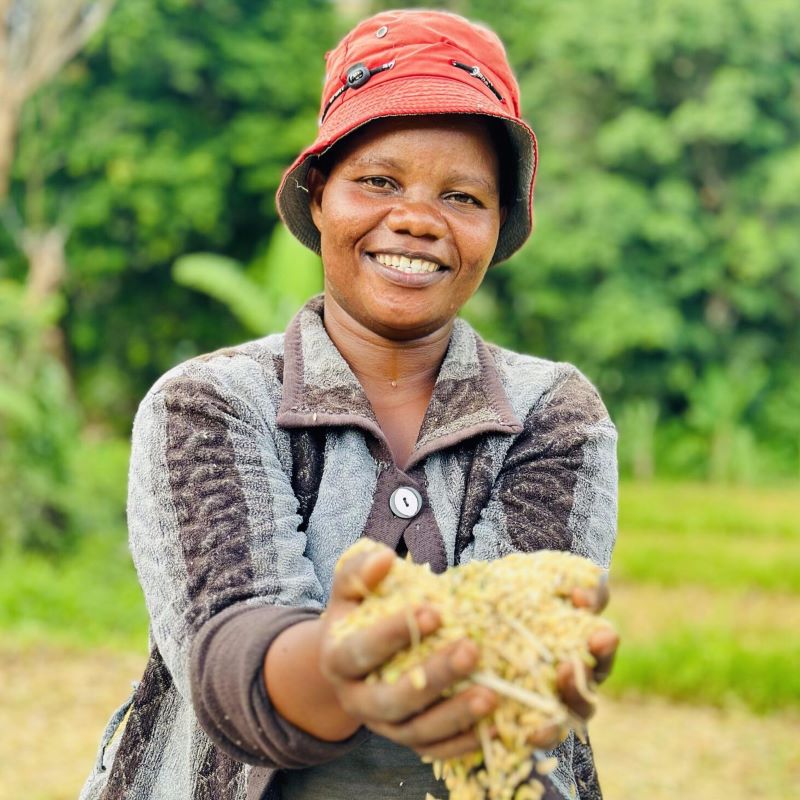Tree planting is rewilding degraded landscapes, bringing back wildlife, and restoring ecosystems
Rewilding landscapes has gained attention as a way to address the biodiversity loss.
Rewilding is the process of restoring degraded ecosystems to their natural state. That allowing for the return of wildlife and the reestablishment of ecological processes. It's a way of "rewinding the clock" on damaged environments. Imagine a forest that has mistreated for years. Rewilding can look like planting native vegetation and shrubs. It can mean letting nature take its course. Over time, the forest returns to its original state. It attracts pollinators and other creatures.
One of the most effective ways to achieve rewilding is through tree planting.
Trees play a crucial role in creating healthy ecosystems. They provide habitat for a wide range of wildlife, from insects and birds to mammals and reptiles. Forests also help to regulate climate, purify air and water, and prevent soil erosion. By planting trees, we can restore degraded landscapes. We can create thriving ecosystems that support a diverse array of species.

The Benefits of Tree Planting for Wildlife
Tree planting has many benefits for wildlife. It provides food, shelter, and breeding grounds for a variety of species. For example, trees produce fruits, nuts, and seeds that feed many animals. They also offer shelter from predators and harsh weather conditions. Additionally, forests create complex habitats that support a diverse range of wildlife.
Plant With Purpose: A Case Study in Rewilding Through Tree Planting
Plant With Purpose is dedicated to the connection between Jesus and nature. This can be found in rewilding landscapes and empowering communities around the world. Through tree planting programs, we are helping to restore degraded ecosystems.
One can make the case that indigenous people 's connection to the land goes back generations. First Nations people often show a deeper understanding and appreciation to the land. There is data to support this claim. "When Indigenous nations become sovereign partners in environmental management, the power structures and worldviews that underlie decision-making can be productively challenged ... creating new solutions to pressing environmental issues," states a study from Flinders University.
It would be a mistake to think that indigenous expertise is a thing of the past. Yes the knowledge of indigenous people is tied to culture, tradition, and ancestry. However, indigenous communities are still innovators and leaders. Their knowledge is perhaps more crucial and timely as climate change worsens.
One of Plant With Purpose's most successful rewilding efforts is in the Democratic Republic of the Congo (DRC). In this region, deforestation has led to severe habitat loss and biodiversity decline. This has been of particular concern around the Congo Basin Rainforest. The second largest forest in the world plays an important role in a healthy climate. It is also the home to many endangered species, including the mountain gorilla.
Since its start in 2015, Plant With Purpose’s DRC program has planted nearly 8 million trees. Plant With Purpose works with local communities to plant trees and restore forests.
Communities have been able to reforest thousands of acres of land. This has resulted in the return of a variety of wildlife in targeted areas. Tree planting has helped to improve soil quality. It has reduced erosion and improved local livelihoods.
Bahati is a father to six children in the DRC. He is a community leader, working to help his community and restore his watershed’s ecosystem.

“I have participated in training on environmental restoration, forest management, and community forest maintenance. On my farm, I applied soil conservation measures by growing ground cover crops. I grow sweet potato as a soil conservation crop against erosion, but my main crop is citrus. I harvest the food products every season which ensures my family’s food security.
“The natural methods I apply on the farm reduce our household expenses. We generate income by selling citrus seedlings for other farmers. This gives me more ways to save with my Purpose Group, and ultimately, my family is happy.”
Purpose Groups link tree planting to financial development. Farming families improve their income and food security through reforestation. In experiencing the benefits, they become active promoters of rewilding.
The Importance of Planting Native Trees
When rewilding landscapes through tree planting, native trees are crucial. Native trees have adapted to local conditions. They and are more likely to thrive and support local wildlife. They also play a vital role in maintaining the ecological balance of a region.

Local farmers carefully select tree species for their reforestation projects. They learn about the valuable role of native trees, Jesus, and nature. The trees they plant are well suited to the local environment. Those trees support the return of native wildlife. 71% of participants plant native trees (compared to 22% of nonparticipants).
“Plant With Purpose offered us belonging, workshops, and training,” reports Deogratias from Burundi. He was trained in Plant With Purpose’s Seeds of Change: Jesus and Nature curriculum. “I have learned about different categories of trees, their environmental and economic benefits, as well as the appropriate places to plant each category of trees. I now also understand the importance of diversification when we plant.
“Thanks to all this knowledge, I planted forest trees in uncultivated areas, agroforestry trees around my farms, and fruit trees such as avocado, orange, lemon, and others. In addition to the trees planted, I understood the importance of native trees on a farm and therefore native trees on my farms are protected. One such variety is the Parinari tree, which grows naturally in large quantities on my farms alongside other species.”
Challenges and Considerations
While tree planting is a powerful tool for rewilding, it is not without its challenges. One of the main challenges is the need for long-term commitment. Restoring degraded ecosystems takes time and requires ongoing management. Additionally, there may be logistical and financial constraints to consider.

Plant With Purpose addresses these challenges by working closely with local communities. Local leaders provide training and support. This ensures that the tree planting projects are sustainable and successful. They also work to raise funds to support their efforts.
The Future of Rewilding Through Tree Planting
Rewilding is a promising approach to addressing biodiversity loss and climate change. As we face environmental degradation, we must prioritize rewilding efforts. We must invest in tree planting initiatives.
Plant With Purpose is an example of the positive impact of tree planting on ecosystems. It demonstrates the power of rewilding to restore degraded landscapes. It offerse a glimpse of a more sustainable future for all.
“We are so grateful for Plant With Purpose,” reflects Edison, a teacher in the DRC, whose students participate in Plant With Purpose workshops. “In addition to the harmony in relationships, the students are experiencing a sense of satisfaction from a job well done, and a greater appreciation of Jesus and nature. This leads to them taking on efforts like planting more trees every year within the school grounds. On behalf of the school, we are so grateful to the supporters of Plant With Purpose, and we look forward to learning even more themes in our local schools.”



















